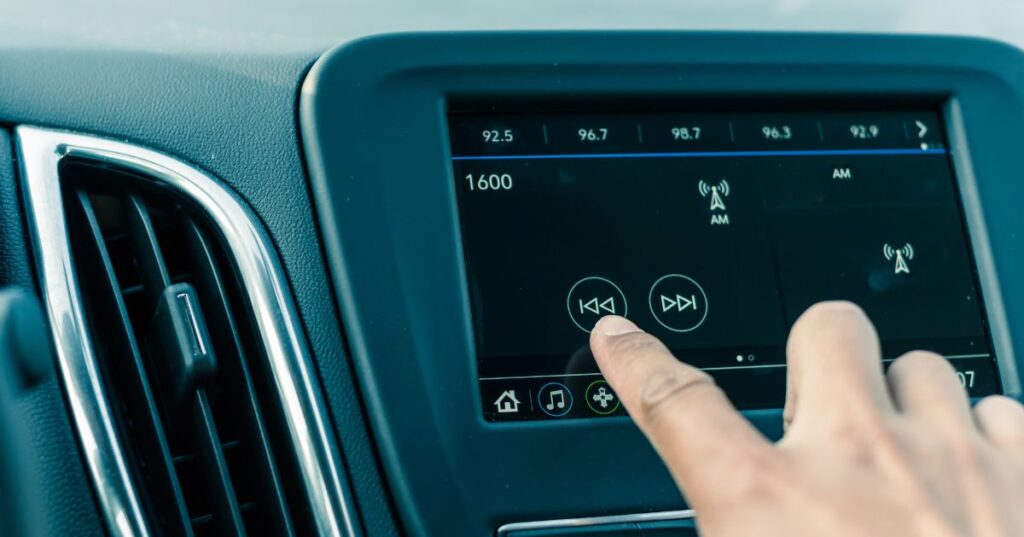In the ever-evolving landscape of RV fleet maintenance, the pivotal role of advanced diagnostics and technology cannot be overstated. The shift from traditional, manual maintenance methods to cutting-edge, technology-driven approaches has revolutionized how fleet managers oversee and maintain their vehicles. This article delves into the intricate world of RV fleet maintenance, highlighting the significant strides made through advanced diagnostics and technology.
Contents
- The Evolution of Diagnostic Tools in Fleet Maintenance
- Advancements in Predictive Maintenance Strategies
- The Role of Data Analytics in Proactive Repairs
- Integration of Mobile Technology and Real-Time Updates
- Remote Diagnostics and Telematics in Fleet Maintenance
- Advanced Training and Certifications for Technicians
- Financing Your Fleet for Sustainable Maintenance
- Challenges and Future Trends in Fleet Diagnostics
- Conclusion
The Evolution of Diagnostic Tools in Fleet Maintenance
The journey of fleet maintenance has been marked by significant milestones, particularly in the evolution of diagnostic tools. In the past, fleet maintenance predominantly relied on manual inspections and experience-based troubleshooting, often leading to extended downtime and inefficiencies. However, the introduction of advanced diagnostic tools has dramatically transformed this landscape.
These modern tools have become indispensable in swiftly identifying and addressing issues, significantly reducing vehicles’ time in repair shops. Dedicated triage bays in many shops now facilitate quick health scans of vehicles, aiding in prioritizing repairs. With vehicles becoming increasingly computerized, diagnostic tools have evolved to interpret extensive data from various sensors and components, providing a comprehensive understanding of a vehicle’s health.
The ratio of diagnostic tools to technicians has changed markedly. Until about 2020, It was approximately 6-to-1. By 2022, this ratio dropped to 4-to-1, and predictions suggest it could reach 2-to-1 by 2025. This surge in diagnostic tool utilization underscores their critical role in maintenance operations, enabling fleets to address potential issues and mitigate downtime re-emptively.
Advancements in Predictive Maintenance Strategies
Predictive maintenance has emerged as a game-changer in fleet maintenance, offering a proactive approach to vehicle care. Predictive strategies employ condition monitoring, unlike traditional methods that rely on fixed time intervals for maintenance. This involves regularly assessing the health and performance of fleet equipment using advanced sensors and data analysis techniques.
By proactively identifying potential issues, predictive maintenance significantly reduces unplanned downtime and enhances equipment reliability. This approach allows fleet managers to schedule maintenance tasks based on equipment conditions, saving considerable time and resources. Additionally, it optimizes inventory management by ensuring necessary spare parts are available when needed, streamlining the maintenance process.
The Role of Data Analytics in Proactive Repairs
Data analytics has become a cornerstone in proactive repair and maintenance strategies. By harnessing the power of machine learning algorithms, fleet managers can analyze historical data to predict when a component is likely to fail. This enables them to schedule repairs before a breakdown occurs, vastly improving efficiency.
Condition-based maintenance strategies, another facet of data analytics, involve continuous monitoring of fleet assets through sensors, allowing maintenance to be scheduled based on the actual condition of the asset. Identifying trends and patterns across the fleet through data analytics helps implement targeted repairs and preventive measures. This strategic use of data analytics not only enhances decision-making but also aids in optimizing spare parts inventory, reducing downtime, and improving overall fleet efficiency.
Integration of Mobile Technology and Real-Time Updates
Integrating mobile technology has been a significant leap forward in enhancing the efficiency of fleet repair and maintenance processes. With mobile technology, fleet managers and technicians gain instant access to crucial information such as repair requests, maintenance schedules, and inventory levels. This immediacy in information flow facilitates prompt decision-making, increasing productivity and reducing downtime.
Mobile apps and platforms empower technicians with on-the-go access to repair manuals, diagnostic tools, and parts availability, eliminating the reliance on physical documents and reducing trips to the office. Real-time updates also foster better communication between fleet managers and technicians, ensuring synchronized operations and minimizing repair delays. The adoption of mobile technology in fleet maintenance epitomizes the shift towards a more streamlined, efficient, and cost-effective approach.
Remote Diagnostics and Telematics in Fleet Maintenance
Adopting remote diagnostics and telematics solutions represents a significant leap forward in fleet maintenance. These technologies have revolutionized fleet management by enabling real-time monitoring and management of fleet vehicles. Remote diagnostics allow vehicle health monitoring, alerting managers to potential issues before they escalate into major problems. Telematics solutions, on the other hand, provide a wealth of data on aspects such as fuel consumption and engine performance, contributing to improved maintenance planning and efficiency.
The integration of these technologies has not only led to cost reductions in repair and maintenance. Still, it has also enhanced fleet safety by enabling monitoring of driver behavior and the implementation of corrective measures. This technological progression underscores the shift towards a more data-driven, proactive approach in fleet maintenance, yielding significant operational efficiency and cost savings benefits.
Advanced Training and Certifications for Technicians
The complexity of modern vehicle systems necessitates advanced training and certifications for technicians. This need is especially pronounced in the context of RV fleet maintenance, where the intricacy of systems demands a high level of expertise. Advanced training ensures technicians remain abreast of industry advancements and best practices.
By investing in ongoing education, fleets are not only enhancing the technical knowledge of their staff but also improving their ability to perform tasks efficiently. This investment in human capital is crucial in reducing downtime and increasing fleet productivity. Moreover, it contributes to higher service and reliability levels for customers, reinforcing the importance of skilled labor in the maintenance ecosystem.
Financing Your Fleet for Sustainable Maintenance
In the realm of RV fleet maintenance, the aspect of financing caravans emerges as a crucial factor. The ability to afford regular and advanced maintenance is pivotal for ensuring the longevity and performance of these vehicles. Caravan financing options can provide fleet owners with the necessary resources to invest in regular maintenance and upgrades, ensuring their fleet remains in top condition. This approach not only aids in preserving the value of the fleet but also in maintaining high safety and performance standards, which are essential in the competitive RV market.
Challenges and Future Trends in Fleet Diagnostics
Despite the advancements, there are challenges in fleet diagnostics, such as refining data mining due to the complexity of data and the need for enhanced training for technicians. The technician shortage and the necessity for localized or mobile training solutions are prominent issues. Keeping pace with technological advancements and ADAS systems requires continuous learning and adaptation.
The future of fleet maintenance is poised to be driven by prescriptive analytics, where predictive data is used for describing or predicting outcomes and prescribing solutions. This evolution points towards an even more integrated, data-driven approach in fleet management.
Conclusion
The landscape of RV fleet maintenance is continuously evolving, driven by advancements in diagnostics and technology. From predictive maintenance strategies to integrating mobile technology and the importance of advanced training, the sector is witnessing a paradigm shift towards more efficient, data-driven, and proactive maintenance practices. Adopting these advanced diagnostics and technology enhances fleet performance and plays a crucial role in maintaining high safety and operational standards. As the industry continues to innovate and adapt, embracing these advancements will be key to achieving optimal fleet performance and sustainability.







